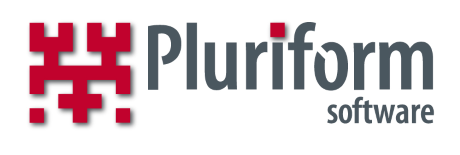Pluriform Studio
For new and / or changing needs, it is essential to quickly bridge the gap between the required and the existing functionality. Pluriform Studio includes all the tools needed to make fast, durable and reusable modifications and extensions to Pluriform.
Pluriform Web Studio
Pluriform Web Studio offers a full web interface to easily create web functionality for your website, web portal or web application. Our intuitive live-like interface makes developing in a complex integrated system really simple.
Pluriform offers a wide range of ingenious integrated tools. No more extensive searching for the place(s) where functionality is used and is to be changed or to see what the consequences of an adjustment will be exactly, but direct access and visible results.
Releases and patches
A Pluriform production system consists of three layers: Base layer, a Industry layer (which together form an industry model), and a customer-specific layer (with all your data and settings).
Every day a new version of Pluriform Base is available with new features, fixes and improvements for our innovators (our partners and their innovation customers). Innovation projects are the basis for these changes and are verified during thousands of production (human) hours. This results every six months in a new, highly stable Pluriform Release free of charge for all our customers.
Customers and partners can adopt this continuous flow of improvements and enhancements at their own pace in their own systems. Most customers update once a year to the current production release for their industry. Customers can also participate in the innovation release and update every week with the latest prerelease production in order to have changes quick and provide the quickest real, vital feedback from their practice.
Improvements can be bundled patched to the appropriate systems so that they are readily available even in production.
Security
Pluriform provides Authentication, Authorization and Encryption to regulate the proper accessibility and confidentiality of information.
Authentication. Users need their username and password (and if 2-factor authentication is enabled an additional token) to logon. Pluriform supports unified logon if the authentication is done by Windows.
Authorization. Access to information objects, and the right to modify can be controlled in several ways. Pluriform supports 'Role Based Authorization: The user role determines what one is permitted with a particular object. In addition, it is even possible to setup per object which individual users can read that object, change or delete. Using Context-Based Authorization: we can determine what someone with a particular object can do based on the context.
Encryption. All data is encrypted and stored in the object database. Also all communications over the network is encrypted.
Exchange data
The best results are achieved if data is only saved in one system (Pluriform) and then (re)used in Pluriform. If this is not (yet) possible because you are using lots of lecacy systems, Pluriform also offers several features to exchange data with other systems, for example XML, CSV, XLSX and Web services. It's all possible with Pluriform.
In Pluriform import and export definitions are used to exchange data. These can be executed manually or automatically by scheduling , for example every week, every day / night, every hour (or web services directly) to execute.
(Re)use of existing knowledge
Pluriform contains a thousands of base objects which can be used to quickly built a new model. Models can also be fine-tuned in order to make them suitable for a particular application.
Enhanced functionality in Pluriform Base becomes available for use in all (industry) modals. Redundant components that are (almost) no longer used are systematically deleted. This kind of evolution is standard in Pluriform. We call this growing and pruning.
Durable adjustable
Continuous improvement is the characteristic in which Pluriform excels and differs most from other development methodologies: a new system can be setup in short time and can then adapt and improve evolutionarily during decades to come. This keeps Pluriform systems 'forever young'.
Pluriform Database
Pluriform includes its own object database management system (ODMS). It holds both meta and data; all model information (information about objects) and stored (logic), and the information in the objects themselves (the data).
All objects in the Pluriform database are protected by a comprehensive authorization mechanism against unauthorized use and are not "outside" accessible. All the data is encrypted and stored in the database.



